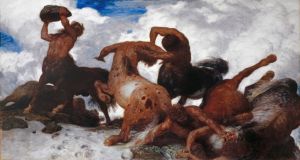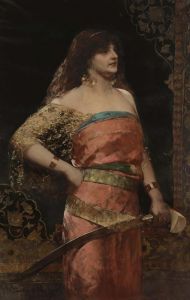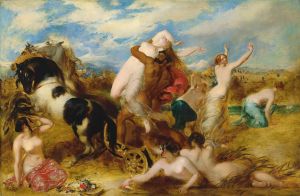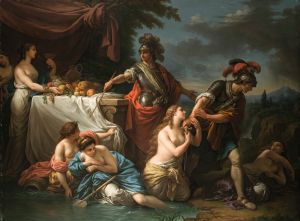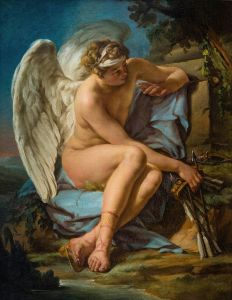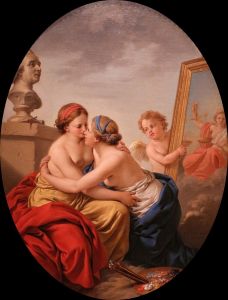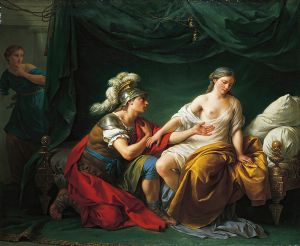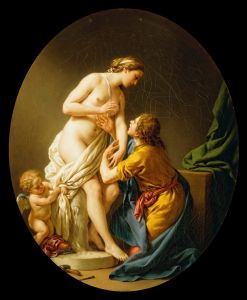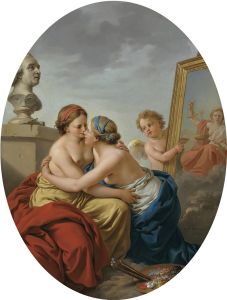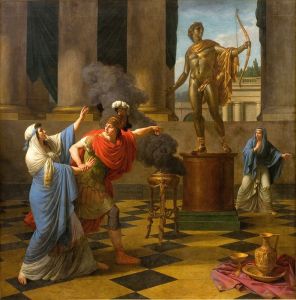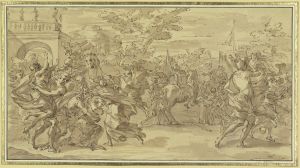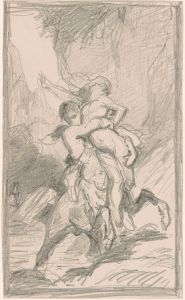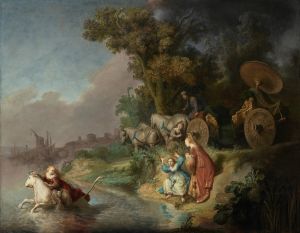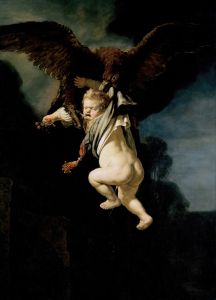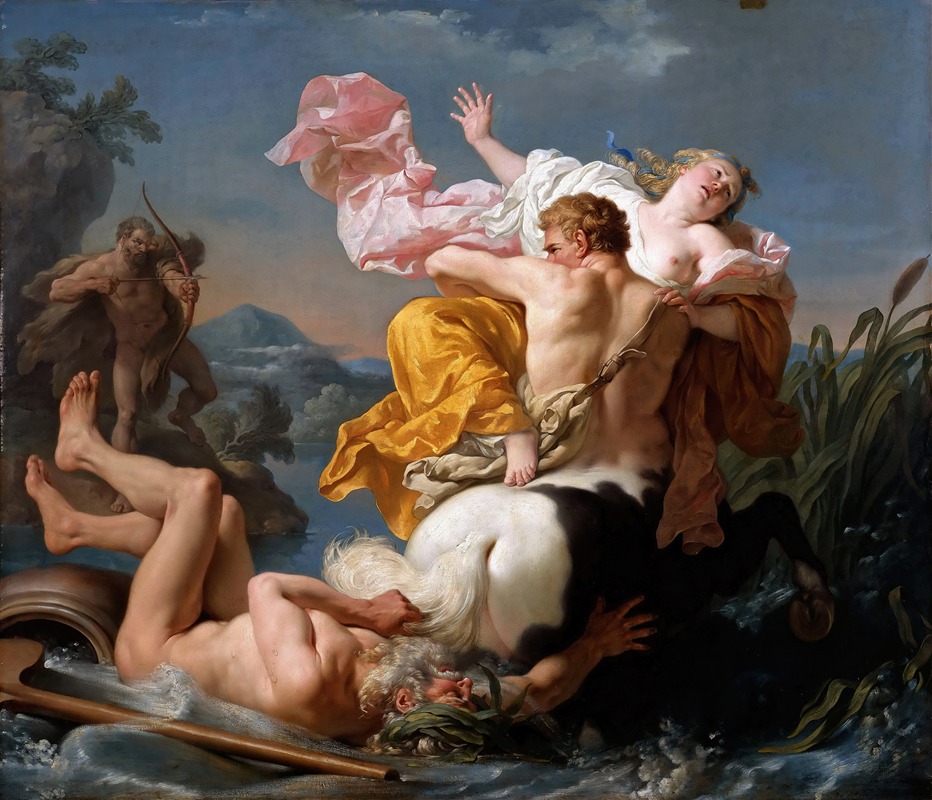
The Abduction Of Deianeira By The Centaur Nessus
A hand-painted replica of Louis-Jean-François Lagrenée’s masterpiece The Abduction Of Deianeira By The Centaur Nessus, meticulously crafted by professional artists to capture the true essence of the original. Each piece is created with museum-quality canvas and rare mineral pigments, carefully painted by experienced artists with delicate brushstrokes and rich, layered colors to perfectly recreate the texture of the original artwork. Unlike machine-printed reproductions, this hand-painted version brings the painting to life, infused with the artist’s emotions and skill in every stroke. Whether for personal collection or home decoration, it instantly elevates the artistic atmosphere of any space.
Louis-Jean-François Lagrenée was a prominent French painter of the 18th century, known for his works that often depicted mythological and historical subjects. One of his notable paintings is "The Abduction of Deianeira by the Centaur Nessus." This artwork is a fine example of Lagrenée's skill in capturing dramatic narratives and his ability to convey emotion through classical themes.
The painting illustrates a scene from Greek mythology involving Deianeira, the wife of the hero Heracles (Hercules in Roman mythology), and the centaur Nessus. According to the myth, Nessus was tasked with ferrying travelers across the river Evenus. When Heracles and Deianeira arrived at the river, Nessus offered to carry Deianeira across while Heracles swam. However, during the crossing, Nessus attempted to abduct Deianeira. Heracles, upon realizing the centaur's intentions, shot Nessus with a poisoned arrow, which ultimately led to Nessus's demise.
Lagrenée's depiction of this mythological event captures the tension and drama of the moment. The composition likely emphasizes the struggle between Deianeira and Nessus, highlighting the centaur's brute strength and Deianeira's distress. The artist's use of color, light, and shadow would have been employed to enhance the emotional intensity of the scene, drawing the viewer into the narrative.
Lagrenée was influenced by the Rococo style, which is characterized by its ornate detail, elegance, and use of soft colors. However, his work also shows elements of Neoclassicism, which was gaining popularity during his lifetime. Neoclassicism sought to return to the simplicity and grandeur of ancient Greek and Roman art, and this influence can be seen in Lagrenée's structured compositions and classical themes.
"The Abduction of Deianeira by the Centaur Nessus" reflects Lagrenée's mastery of both Rococo and Neoclassical elements. His ability to blend these styles allowed him to create works that were both visually appealing and rich in narrative content. The painting would have been appreciated not only for its aesthetic qualities but also for its ability to convey a well-known mythological story with clarity and emotion.
Lagrenée's work was well-regarded during his lifetime, and he held several prestigious positions, including that of a professor at the Académie Royale de Peinture et de Sculpture in Paris. His contributions to the art world were significant, and his paintings continue to be studied and admired for their technical skill and storytelling prowess.
While specific details about the current location or provenance of "The Abduction of Deianeira by the Centaur Nessus" may not be widely documented, Lagrenée's works are held in various collections around the world, including museums and private collections. His paintings remain an important part of the study of 18th-century French art, offering insights into the artistic trends and cultural narratives of the time.
In summary, Louis-Jean-François Lagrenée's "The Abduction of Deianeira by the Centaur Nessus" is a testament to his ability to blend mythological storytelling with the artistic styles of his era. Through his skillful use of composition and emotion, Lagrenée brings to life a dramatic moment from Greek mythology, showcasing his talent and the enduring appeal of classical themes in art.





